Nubra Valley, Ladakh Medical work
Day 2, 16 July 2018
Onwards to Nubra Valley!
Onwards to Nubra Valley!
We left Stok Palace early (about 8am) that morning to attempt to cross the Ladakhi ranges with the hope to arrive in Diskit and Hunder in Nubra Valley early enough for us to settle in and do a quick reconnaissance of the Samstanling Monastery in which we were to set up our medical service.
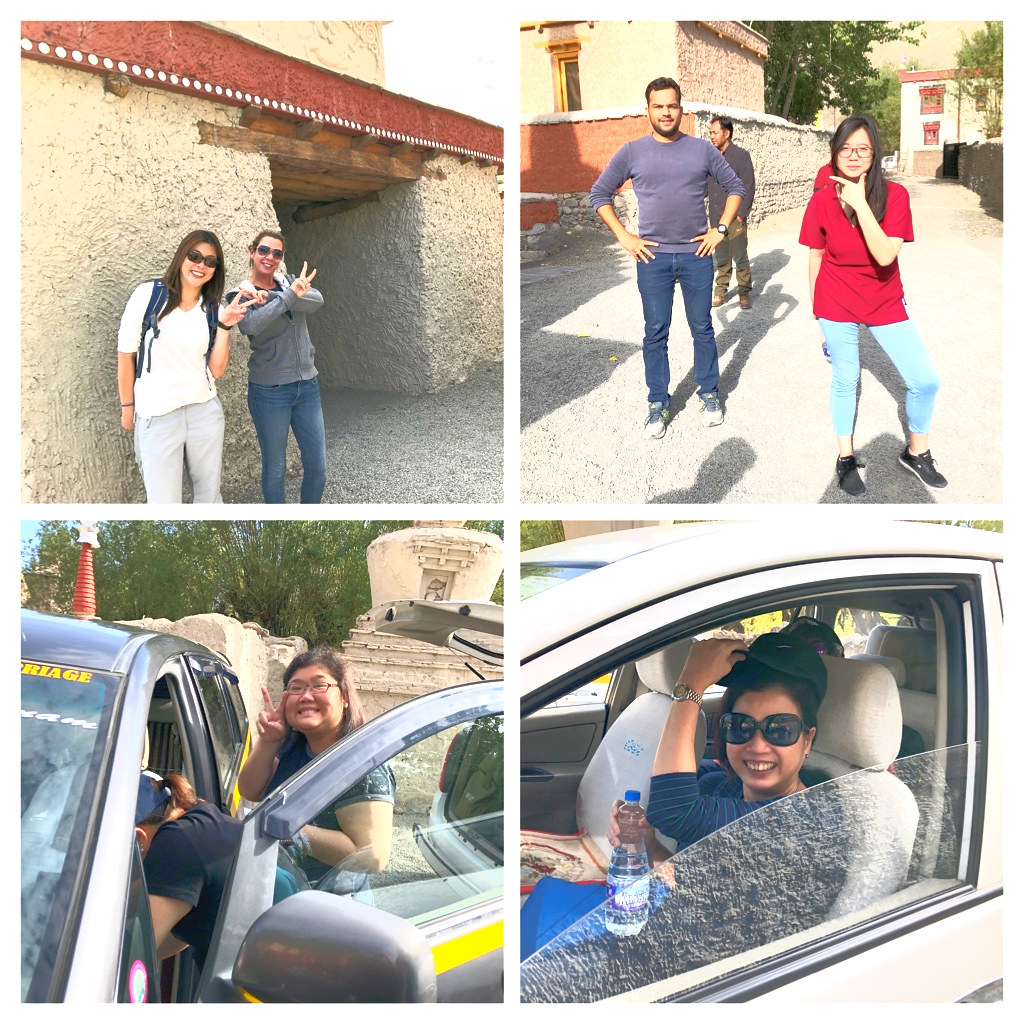 |
| Clockwise from top left: Vanessa Ding and Laura, Neelam & Jeanette, Lay Hong, ShuXian and Vicky -all ready to go! |
Here is the VIDEO for Day 2
The long arduous moutanous 6-7 hour 130km journey by Jeep awaited us. We knew this was a critical day because we needed to make it safely through the highest Khardung-La (Khardung Pass) at 5600m and then endure the long winding narrow mountain road to pass through the faraway town of Diskit before arriving at the town of Hunder where we had a relatively budget Chamba Camp Hunder booked for us.
This drive from Leh northwards brought us across all the terrains of Ladakh. We encountered village after village, nestled at old-glacial valleys, some totally barren while others slightly more fertile with irrigation from the nearby river.
It was quite interesting how clear the line of delineation was between fertile land and barren, sandy grounds of rocks and gravels. It was later on in Thiksey from the local Ladkahi guide that we learned that irrigation with small little channels leading from the main river gave rise to the fertile soil in the parts nearest to the river, but further away, as the land sloped upwards, it became harder to deliver enough irrigation. My question to employing mechanical pump to do the job was answered by a simple feasibility - simply meant - whether it was economically viable to have water so high up to grow vegetations at the expense of electricity. My personal opinion was, the villagers didn't or hadn't the need to have so much fertile land, when what they had at this point was sufficient for a simple life.
As our jeep engines whirrled and strained up the gradients of the road towards the higher altitudes, I was very impressed to see a few Ang Moh men and ladies on their mountain bikes and their hybrid bikes, spinning slowly up the very same lane we were motoring up. I reckoned that the altitude would have been around 4000m or above (remember, Khardung-La was going to be 5600m), these tough riders must be working really hard against the rarified oxygen content in the air and the upwards slope.
 |
| Wow! Ang Moh mountain bikers going all the way up to 5600m! They have my respect! |
I remembered some years ago when our friends Charels Vu and Seng Keong trekked up to above 5000m in Stok Pass in Ladakh, and how they complained about the emptiness of the land. It was only now that I finally understood what they meant. The Ladakhi ranges and their valleys were really mostly devoid of grass and even shrubs. What we enjoyed was a sprawling spread of nothingness and a constant bombardment of fine dust particles that made their insidious entry into our nasal and sinus passageways, and some into our eyes.
The combination of high dose Dexamethasone and Diamox really masked any altitude sickness we would have experienced at this altitude, which, without my trusty Garmin watches, I could only estimate to be around 5000m. The rapidity of ascent (remembering that we only touched down at Leh the day before at 3500m, and less than 24 hours later now we were way above 5000m) gave us little discomfort, surprisingly. In restrospect, I realised that Felicia Tan's magic combination of high dose Dex and Diamox was the secret.
 |
| The zig zag mountain road up to Khardung-La. |
The constant presence of military 5 tonners and military personnels reminded me how delicate the situation was still in the State of Jammu and Kashmir. Although here in the northern parts, it was relatively much more quiescent as compared with down south, the Indian army had enough trouble historically with their warring neighbours, China included, to learn not to let down their guards for even a second.
 |
| The military personnel’s are all over the places! |
We were finally nearing Khardung-La [Khardung pass].
We had been on the roads for almost close to two and a half hours. Both Serene and I had the pleasure of sharing our Jeep with Tan Lay Hong, Felicia and Jeanette's most companionable aunt, who enthusiastically entertained us through the Jeep journey with a history of her life and all the most amazing things she had achieved in her contributions to her students, and her monumental accomplishment and sacrifices in her life . We were truly impressed.
Driving upwards the zig zag roads of the really barren mountains was occasionally hindered by slow moving trucks. The very narrow road made it difficult to overtake but our drivers were so experience and their maneuvres appeared so effortless.
We were nearly at Khardung-La already. Here we were at a small little rest place before we made the final push up towards 5600m.
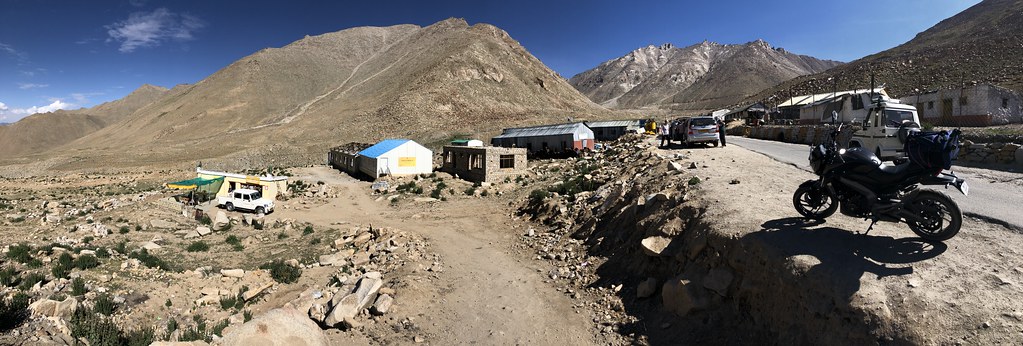 |
| A panorama of this little rest area, where there was still decent toilet facilities. |
KHARDUNG-LA 5600m!
Well we finally arrived at Khardung-La, which meant from this point onwards it would be downwards all the way. Not bad at all.
We were taken aback by the number of people (including local tourists from India and several young Korean tourists) who jostled for space at the road signs to take photos.
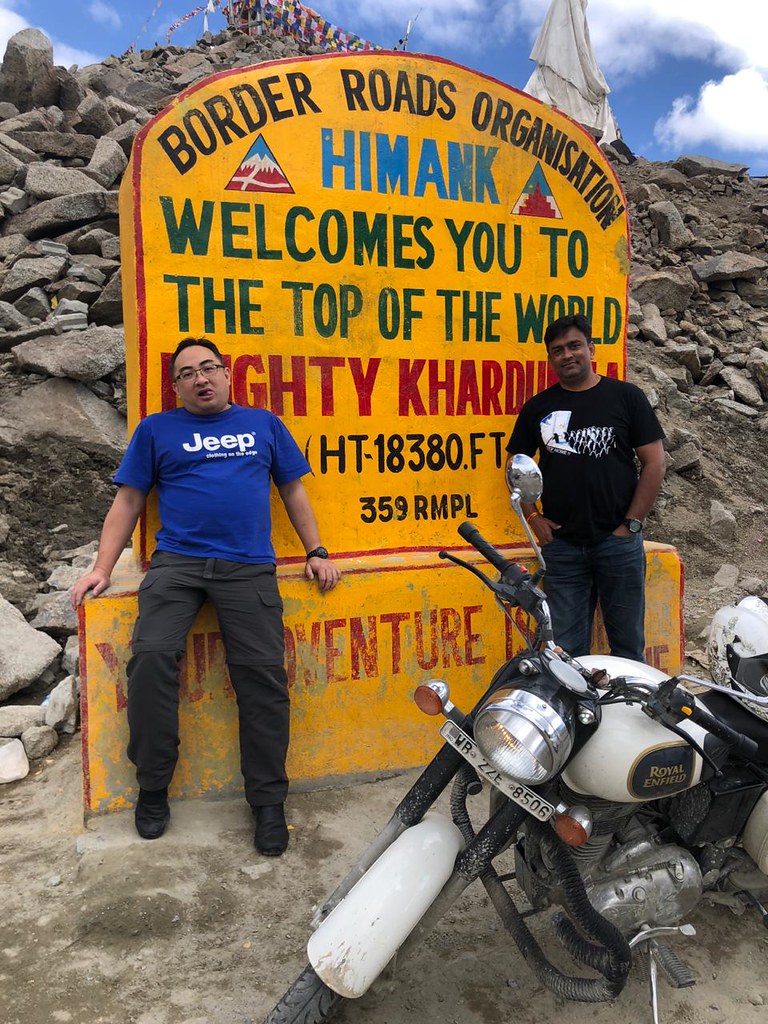 |
| Roy Koh arrived one day after us, but he also had his fun at Khardung-La, with RK Pandey. |
I looked up and saw that the rocks led further up to a small little mount higher up from the main road where a tiny little Gompa (temple) was at the top. Breathlessly I called out to Serene:
"Dar, let's go!"I was being naughty. I knew we had little time. But I could not let this chance slip by without attempting to hit the top and take a couple of photos there.
Climbing up the uneven rocky path, I didn't feel so bad. I strongly believed the diamox and the super high dose dexamethasone really were important prophylaxis towards that. But as we got our legs pumping as we ascended the slope to Khadungla Gompa to take pictures at the top, that was when Serene sand I started feeling a little breahless. And my SA02 indeed dropped to 78% at that point in time, clearly indicating that my body was still struggling.
"Wei! Slow down, sloth pace!" shouted Serene from behind. Her usual favourite words of complaints whenever we trekked.
I left her behind to make her way slowly up while I made a beeline for the Gompa and the stupa right on top.
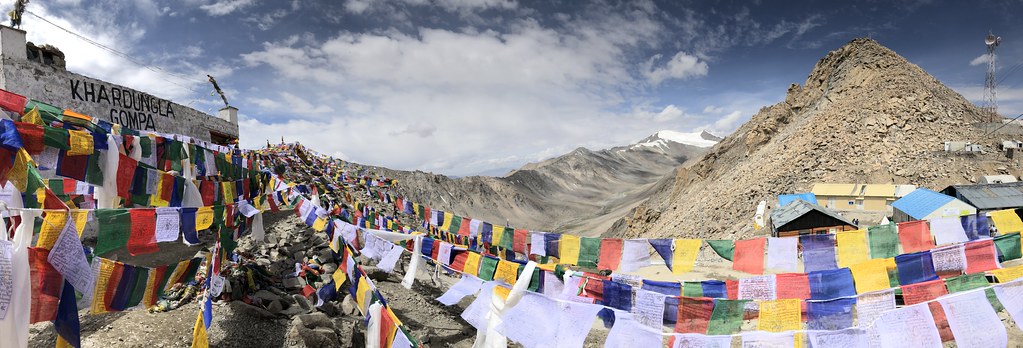 |
| Photo: Serene |
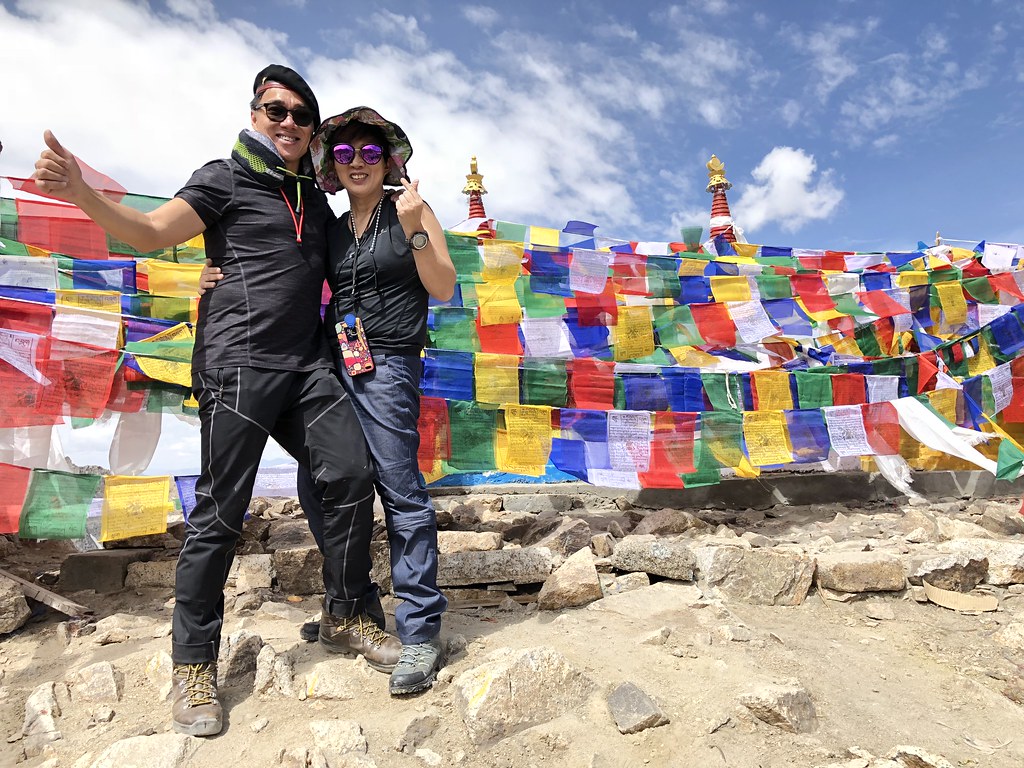 |
| A shot of us taken by a group of Indian travellers up at the peak with us. |
Generally most of us were still alright at this point in time. But some of our poor fellow teammates were suffering from bad gastric reflux and bloated abdomen with cramps and nausea. At a short stop after Khardungla, at Pullu, we did an SAO2 check to make sure that it was still above 90%, and administered a combination of Omeprazole 40mg, buscopan injection, domperidone and dimenate. Though it took some time, but we finally managed to control the symptoms about a couple of hours down the road.
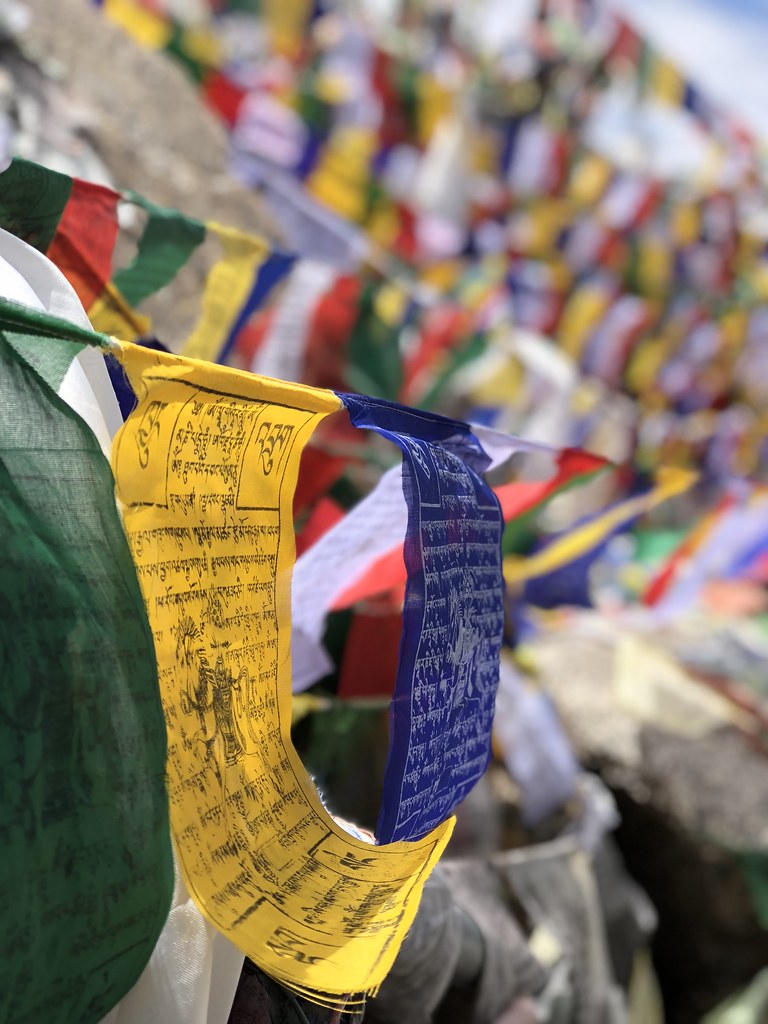 |
| Photo: Serene |
Khardung-La (Khardung pass) was just a small hamlet of rows of shop houses and some monuments and signs and a short climb to the top of the pass with a small stupa and plenty of prayer flags. We were lucky because this was summer and even at 5600m it was actually hot! During winter this whole area would have been buried deep in thick snow. Lay Hong recalled how cold it was when she passed by the same spot in April this year and she could only take a few steps out of the car in all her layers and had to run back quickly because of the freezing cold.
Neelam told us that a huge part of Ladakh would be covered with thick snow and frozen ice for 6 months in a year during the winter-spring seasons. And many of the roads were not passable to vehicular traffic. Only the BRO (Border Road Organisation), made up of military and engineering personnels were the people constantly at work every single day during these 6 months to ensure that the roads were cleared. Even during the summer months now, the BRO could be seen doing repairs and re-constructions of some damaged parts of the roads.
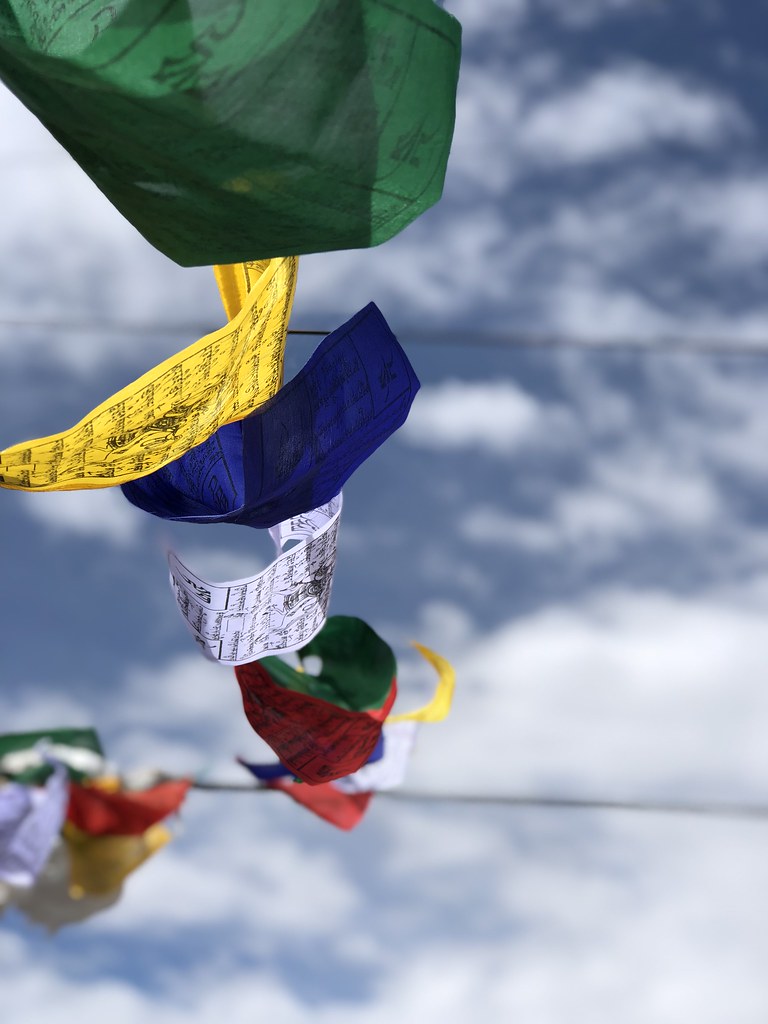 |
| Photo: Serene |
Both Jasmine and Vanessa were happy to have found a clean toilet at Pullu. I was joking with Laura earlier on about the female pee-ing device that allowed the women to pee standing up - she called it the 'she-wee'. That would be ideal at times like these.
After we ascended the Ladakhi ranges, very soon the Karakoram ranges were in full sight from this point onwards on our right as we descended. Ah... the famous Karakoram ranges. Beyond these Karakoram range would be the Baby Karakoram ranges. Together, the Ladakhi range, the Karakoram range and the Zanskar range would be known as the Trans-Himalayan ranges, a distinct set of ranges from the Himalayan ranges down south in Nepal.
I examine the Karakoram and in my heart I still wondered why they were so much more barren than the Himalayan ranges. Why was that so? The only reason that I could conclude was because the rain catchment was blocked by the Himalayans and very little rain reached the Karakoram. Thus the Karakoram were mountains of dried hard rocks, gravels and slopes. Little vegetation was seen, as compared to the Himalayans over at Nepal.
 |
| OK, we were nearing Diskit already. |
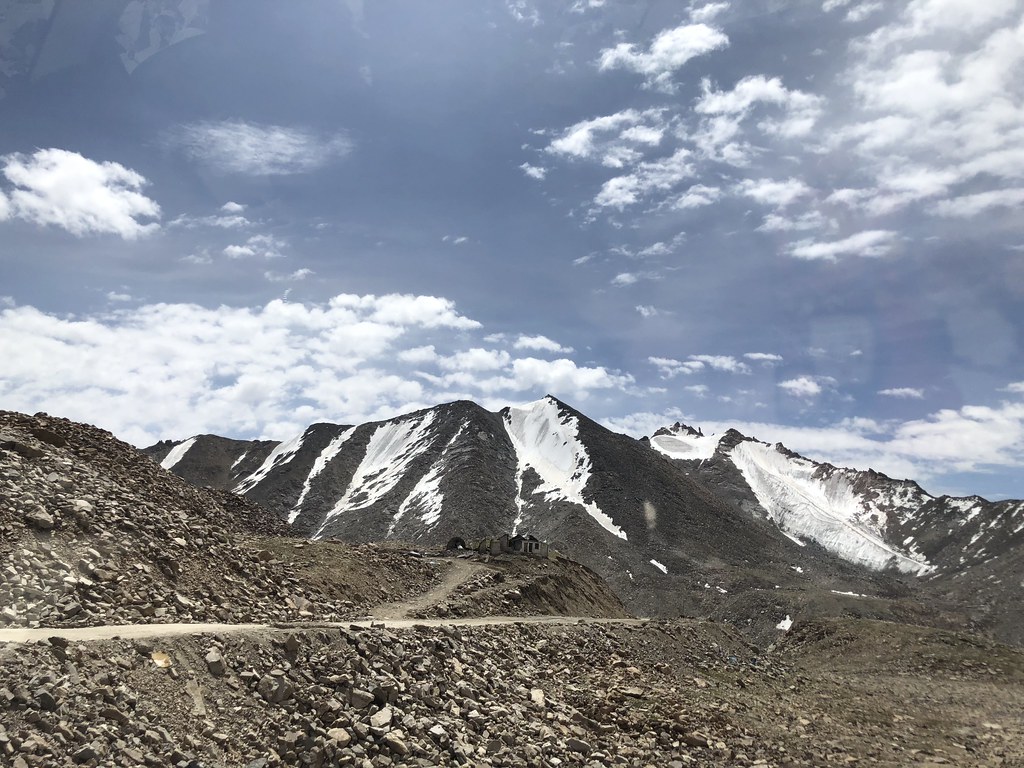 |
| The Karakoram. |
I examine the Karakoram and in my heart I still wondered why they were so much more barren than the Himalayan ranges. Why was that so? The only reason that I could conclude was because the rain catchment was blocked by the Himalayans and very little rain reached the Karakoram. Thus the Karakoram were mountains of dried hard rocks, gravels and slopes. Little vegetation was seen, as compared to the Himalayans over at Nepal.
We needed to rush to Chamba camp Hunder as soon as possible so that we could settle down the support crew on the camp while some would go on to Samstanling Gompa, the monastery holding the Dalai Lama’s lecture, to do a recce and coordination with the monastery staff.
Chamba Camp at Hunder
About 3:30pm. We finally passed the small village of Diskit and arrived at the village of Hunder where our accommodation for the night was.
Chamba Camp at Hunder
About 3:30pm. We finally passed the small village of Diskit and arrived at the village of Hunder where our accommodation for the night was.
 |
| This U-shape route between Diskit, Terith, Lakzung and Sumur would be the route that we would traverse multiple times over the course of the next few days |
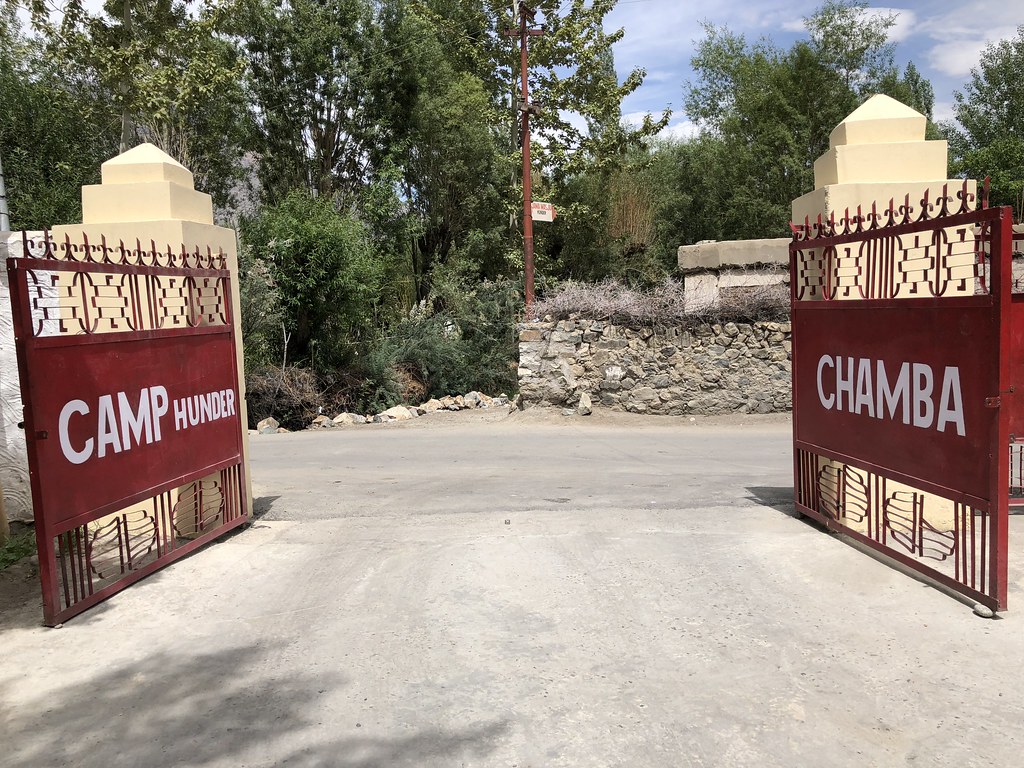 |
| Finally arriving at Chamba Camp Hunder (another name it went by was Chamba resort, as shown on a smaller sign at the side) |
 |
| Delightfully simple Chamba Camp |
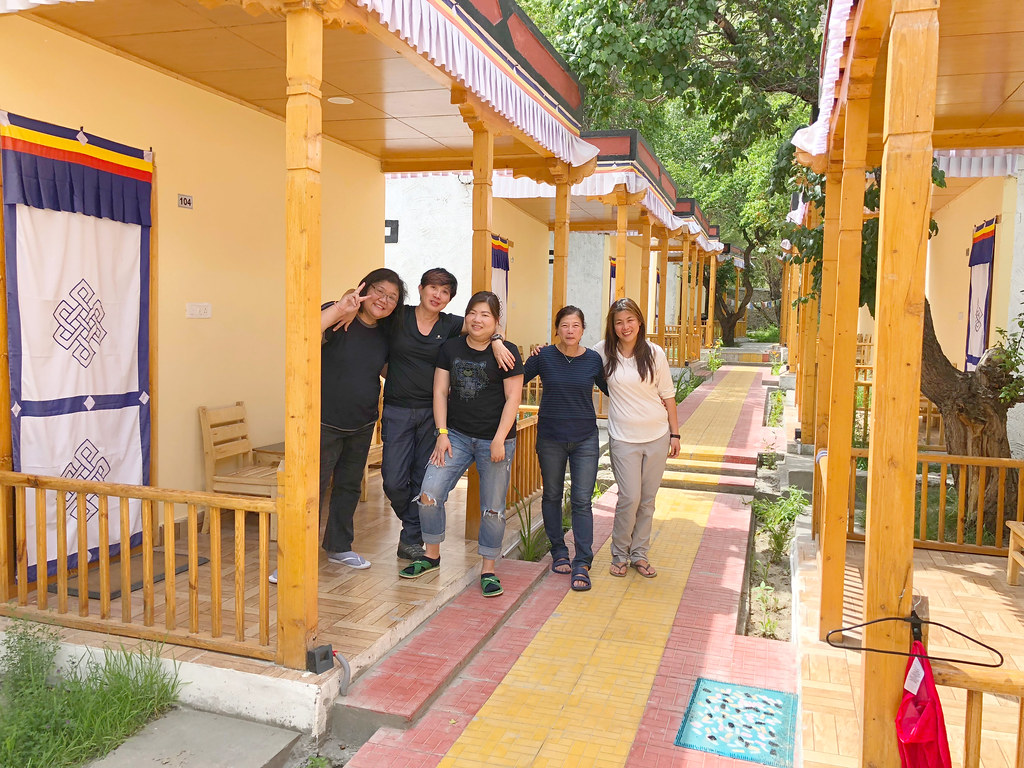 |
| Shu Xian, Sserene, Vicky, Lay Hong and Vanessa Ding |
This year the origansing committee was a different one from last year, and the monastery was also a different one, thus one could never anticipate what would the final set up be.
“Last year’s setup at the other place at Diskit Monastery was very well organised,” remarked Vicky. “They had proper rooms, simple facilities, but all were adequately arranged swee swee for us.”
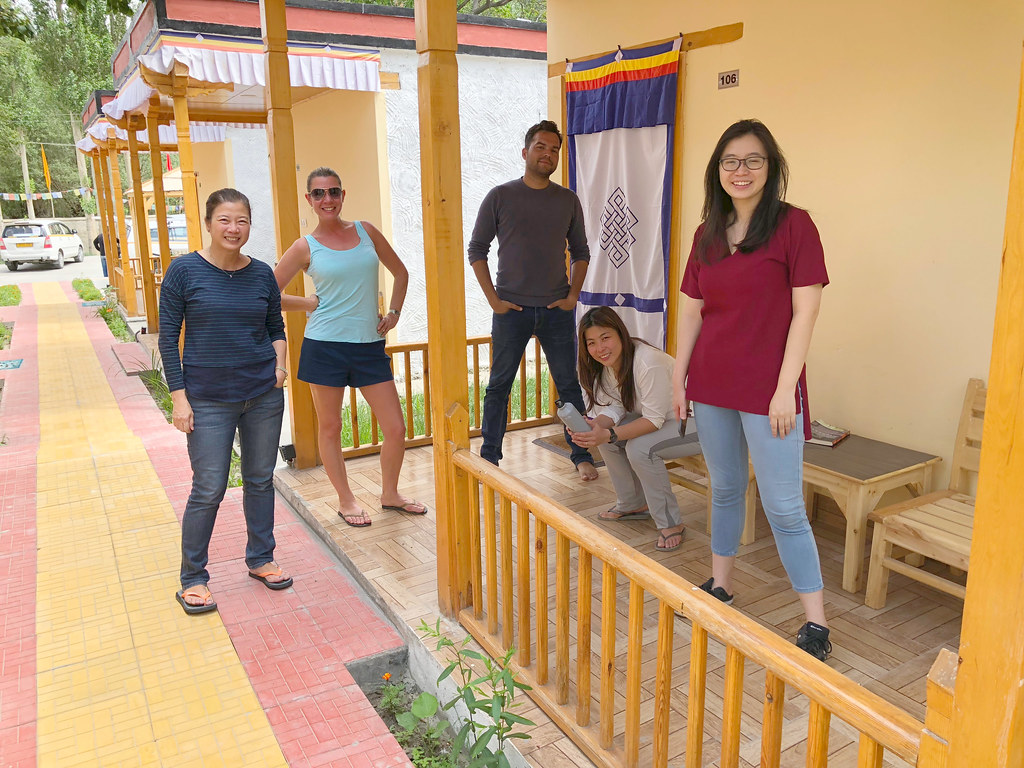 |
| Lay Hong, Laura, Neelam, Vanessa Ding and Jeanette. |
I quite enjoyed the simplicity of Chamba Camp. Knowing myself well, I wasn't one for luxurious accommodations and would much prefer the more rudimentary type. The traveller in me was prepared for all kinds of conditions, even the absence of wifi. But here in Chamba Camp Hunder, we were impressed by the availability of wifi at the dining area, though sporadic at best. Finally we had some connectivity with our modern civilisation. But the haphazard nature of the signals meant that we could only send some messages and some photos and we would find that the speed dwindled. But still, that was good enough. Here in Chamba Camp, the power supply was also unreliable, coming on and off, so I decided that the next best thing was to use our trusty solar panel for charging.
 |
| Nothing could beat harvesting the energy from Mother Nature when modern power generators were unreliable. |
Chamba Camp Hunder was an down to ear affair, very simple vegetarian meals.
“I am no longer feeling breathless now,” exclaimed Vanessa. “Because I have WiFi!”
“I was able to send all my emails!” happily declared Lee Haw Chou!
“I could upload all my photos to Facebook in one minute!” Proudly announced Chang Haw Chong.
“But can only be shared by the max about 5-6 persons,” said Jeanette, which was true because one the maximum number of people logged in the speed lagged so much.
Recce-ing Samstanling Gompa for our medical site.
We didn’t realise that the distance from Chamba Camp Hunder to Sumur and slightly further uphill to the Samstanling Gompa, the monastery holding the lecture to take one and a half hour of car journey. Windy roads, crossing the Shyok river and over to Sumur was the easy part.
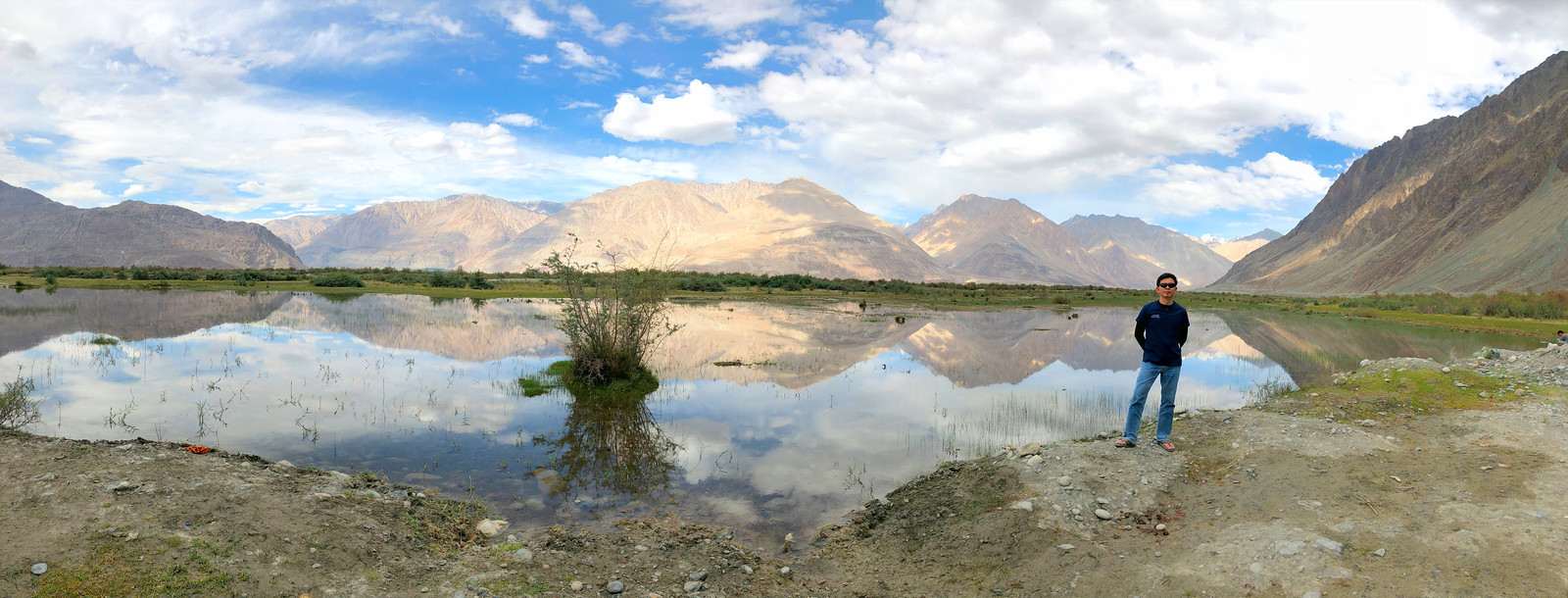 |
| Lee Haw Chou jumped and asked the driver to stop to let us take this shot with the reflection of the Karakoram in the lake. |
Setting up the medical tent...
The difficult part was yet to come. Vicky, Shu Xian, Lay Hong, Lee Haw Chou, Chang Haw Chong and myself went on the recce trip. We met with Lama Kendrap at Samstanling monastery and the two nice young female coordinators Lamo and another one whom I could not remember their names. They were very welcoming and the abbot was very hospitable.
They brought us straight away to our medical tent at one end of the lecturing area. We walked down the steps and the sight that struck us dropped our jaws.
It was a small little tent nestled in between some trees, on uneven ground with a slope just outside the tent and boulders all over. There was no electricity supply and the two young ladies explained that due to security reason we were not allowed to set up in the building of the monastery and they couldn’t pull any electrical wires out to the tent.
 |
| The 'original' teeny weeny tent intended for us... without electricity. |
We were all scratching our heads. How were we to do triaging and registration and dispensing outside such a small sloping ground full of hurdles. The sweltering tent was also too small.
Haw Chong said with a straight face: “Man, if I were to practice inside that tent I am sure I am going to trip over a boulder or something.”
Some of the guys began to walk further across the audience area until they came to the other end of the monastery where there was a small little building by itself, a library for the young monks and three sleeping rooms which were the dormitories for the young monks. There was a foyer and a corridor and there were on concrete ground and the outside area had been covered by canvas cover above providing shelter. We took a look at the library and found that the size and set up was perfect for our six-cubicle doctor consult areas.
This day was the second day of The Dalai Lama’s teaching and though the afternoon session had ended there were still many villagers lingering.
The translucent white and green canvas tops of the multiple tents kept the devotees in the shades and the floors were covered with hard cushions. Local Ladakhis old and young dressed in traditional costumes were seated and chatting. Some young students in school uniforms were hanging around, and toddlers were running all over. A group of young monks were practicing their highly animated style of debate under the shades. Chang Haw Chong and I went around taking in the sights, and of course the shots too.
“There you see that tree,” pointed out Lay Hong to me. “That will be where The Dalai Lama will be seated giving his teachings.”
 |
| Chang Haw Chong making full use of his Nikon and 50mm f/1.8 to take portraitures of the old Ladakhi lades and show them their own pictures on the screen. |
The chapati thickened...
We all studied the library and Lee Haw Chou and Chang Haw Chong were so excited about setting up inside the library that they already started re-arranging the chairs and designating cubicles...
With his ‘Senior
Consultant Orthopaedic Surgeon' scrub gown obviously worn to maximize
its effect, Senior Consltant orthopaedic Surgeon Lee Haw Chou, and Vicky tried in their most diplomatic
manners to persuade Lama Kendrap to allow us the carpeted library.
The Lama’s smile never wavered.
Vicky turner to us and quietly said: “Erm.. not confirmed yet hor...”
And
she was right. Without the blessings from Kurkang Rinpoche, permission
was not granted to even the most senior of Orthopaedic consultants, no
matter how he milked it.
The
final story? The corridor with one tiny bed rooms (at least we had
electricity!) for the ladies to do their breast examinations and
ultrasounds and several tables along the covered corridors for the urea
breath test machines, and the outside area with a loose translucent
green canvas cover as registration and dispensary area and Lay Hong
immediately started putting pen to paper to draw the detail layout for
the local female coordinators. Talk about architectural efficiency!
In
my heart I was glad that both Haw Chou and Vicky were around because of
their past experiences and they knew precisely what the whole medical
set up would need and what would work and what would not.
As
an observer, I could understand how fine a line one would need to tread
in achieving a decent set up yet to comply with the restraints of the
monastery’s authority, respecting their guidelines. This was no easy
task.
We all heaved a sigh
of relief as everything was (presumed) sorted out and took that one and a
half hour car trip from Samstanling Gompa at Sumur back to Chamba Camp
Hunder, and Shu Xian and Vicky were working hard once again compiling the
final list of medicine we had.
To continue to the next day's adventure, click: "Day 3 - Time to work!"
To go back to the home summary page, click: "Nubra Valley Medical Volunteer work - a trip of discoveries"
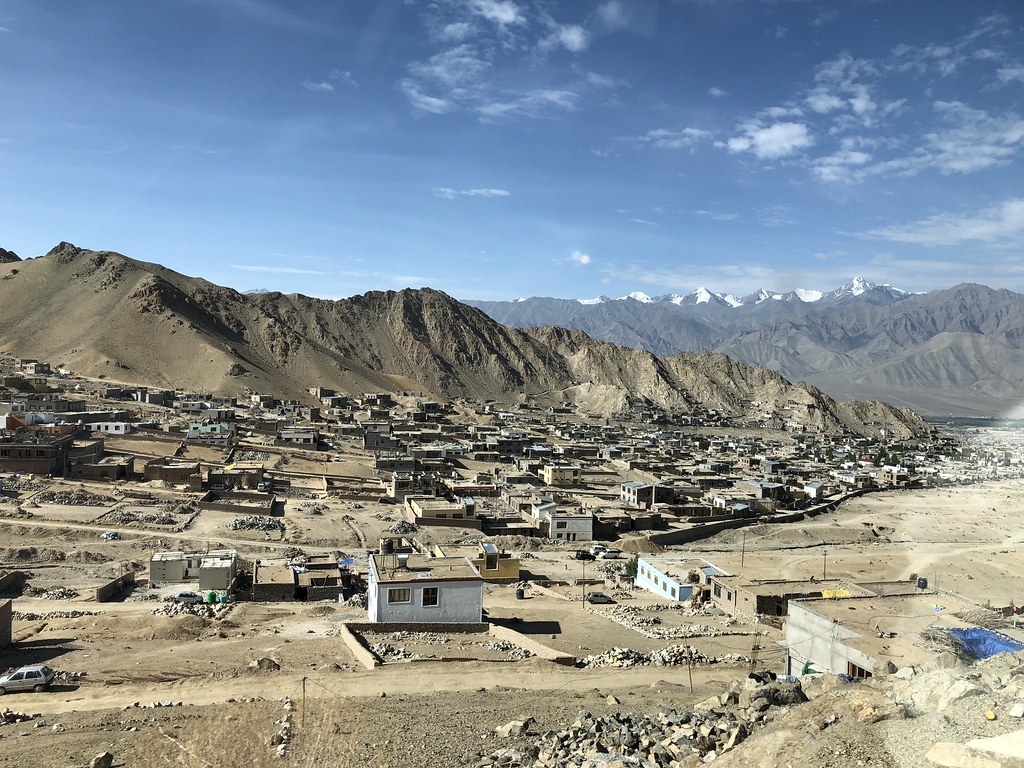

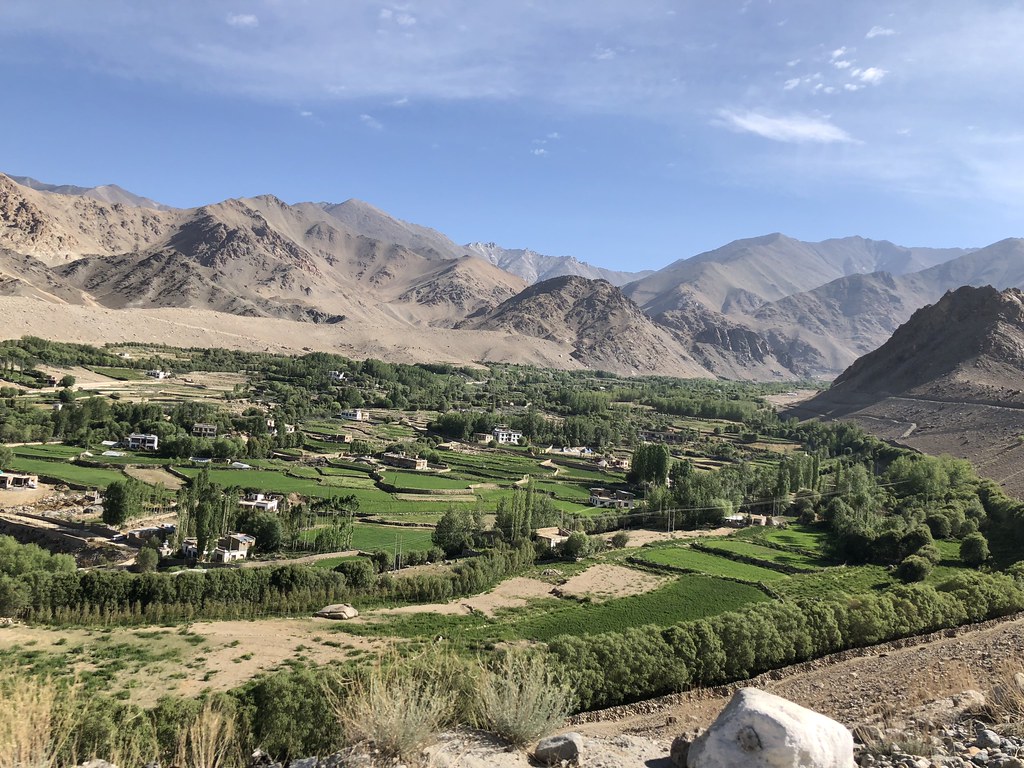
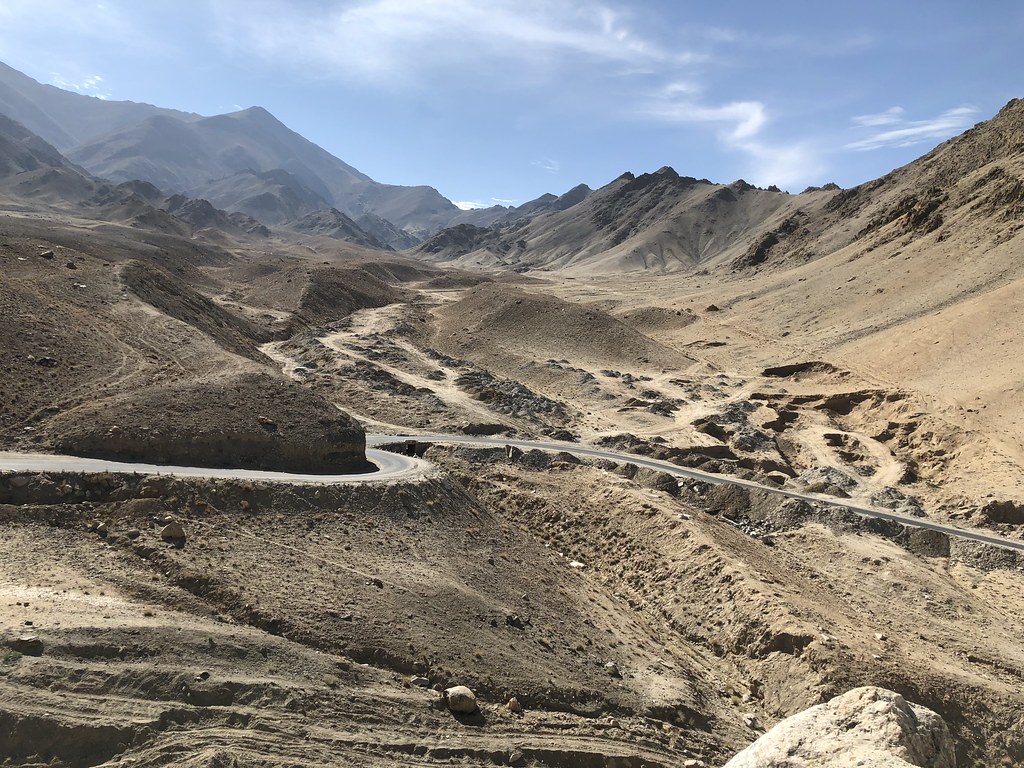
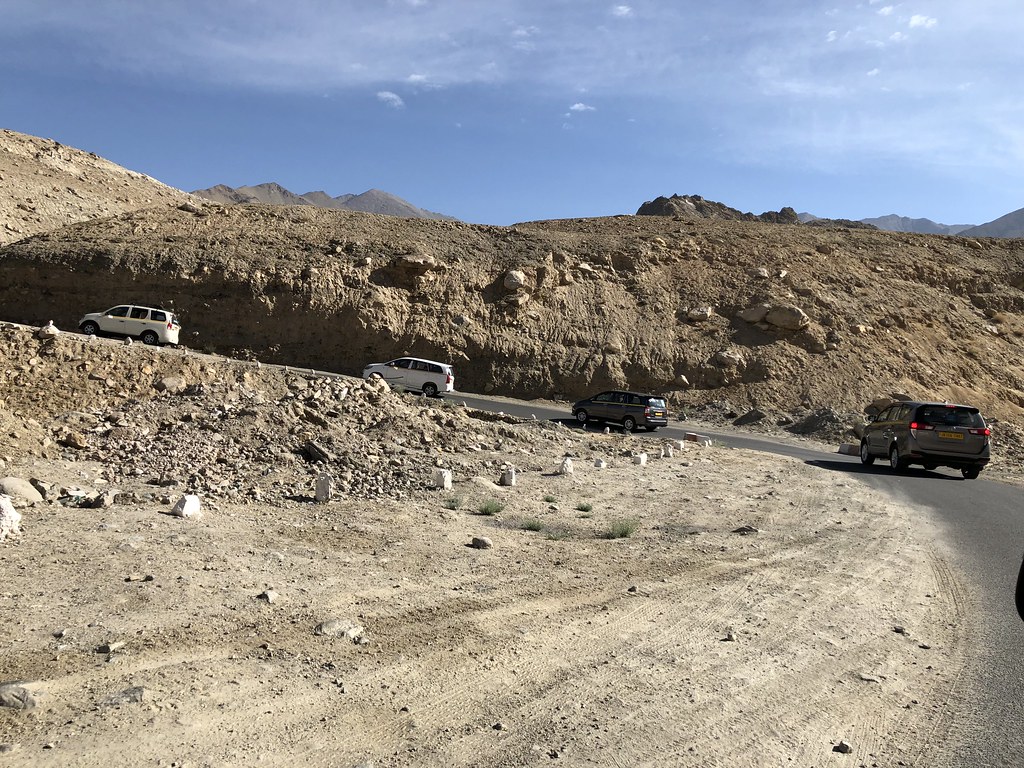

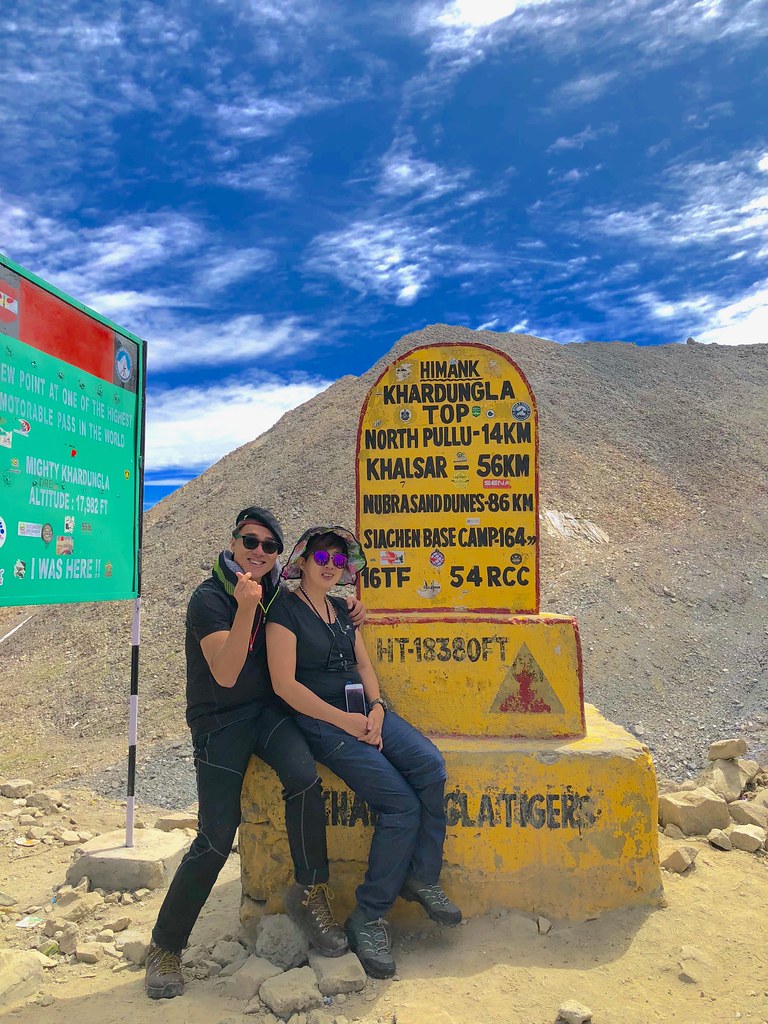
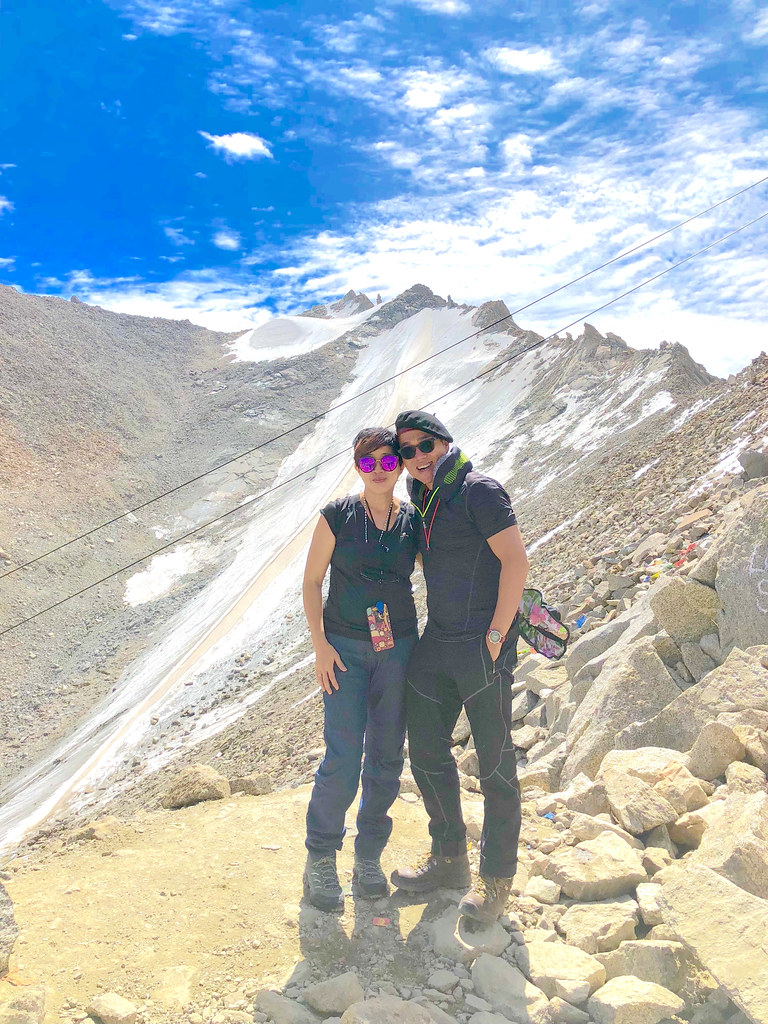
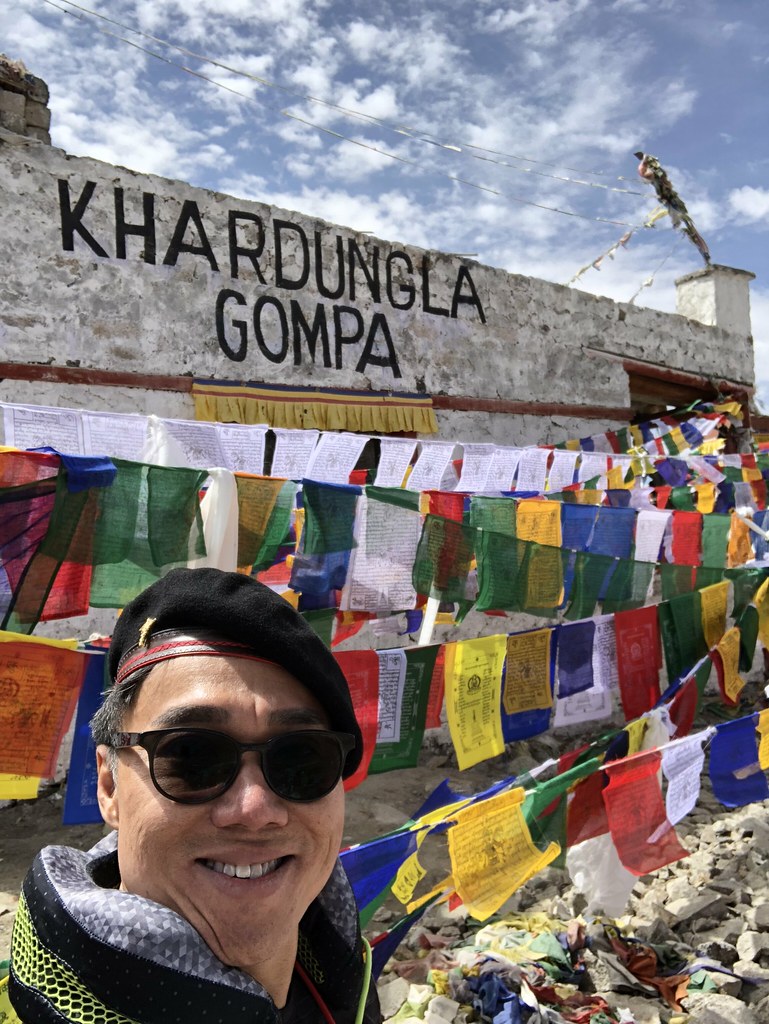



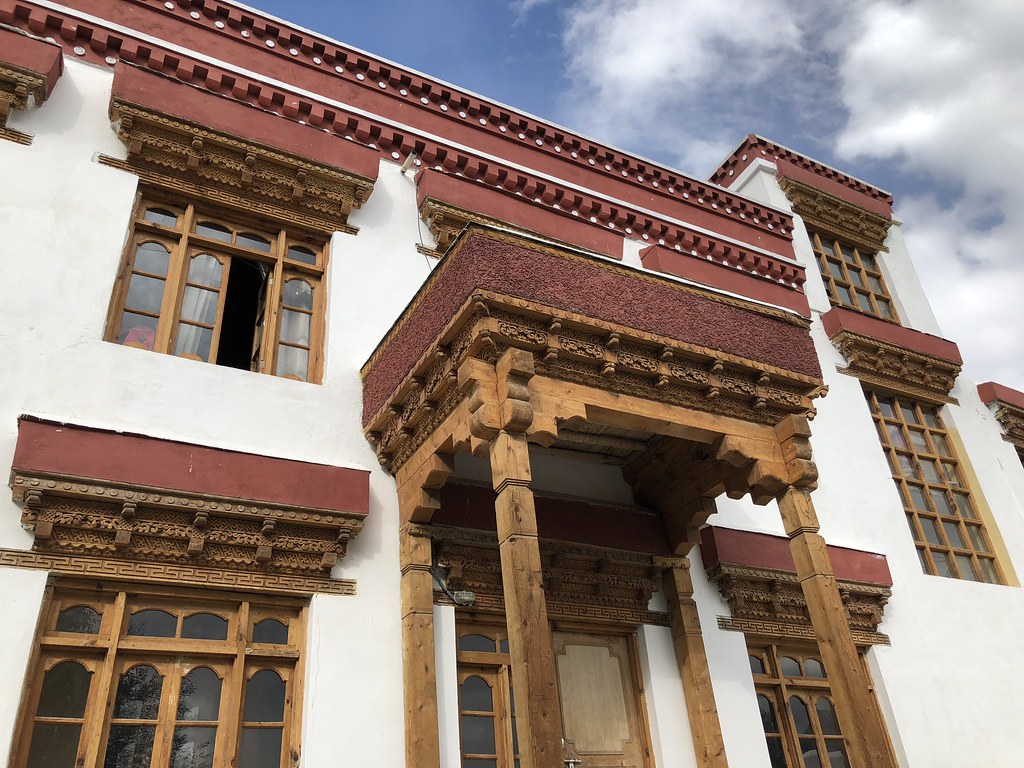






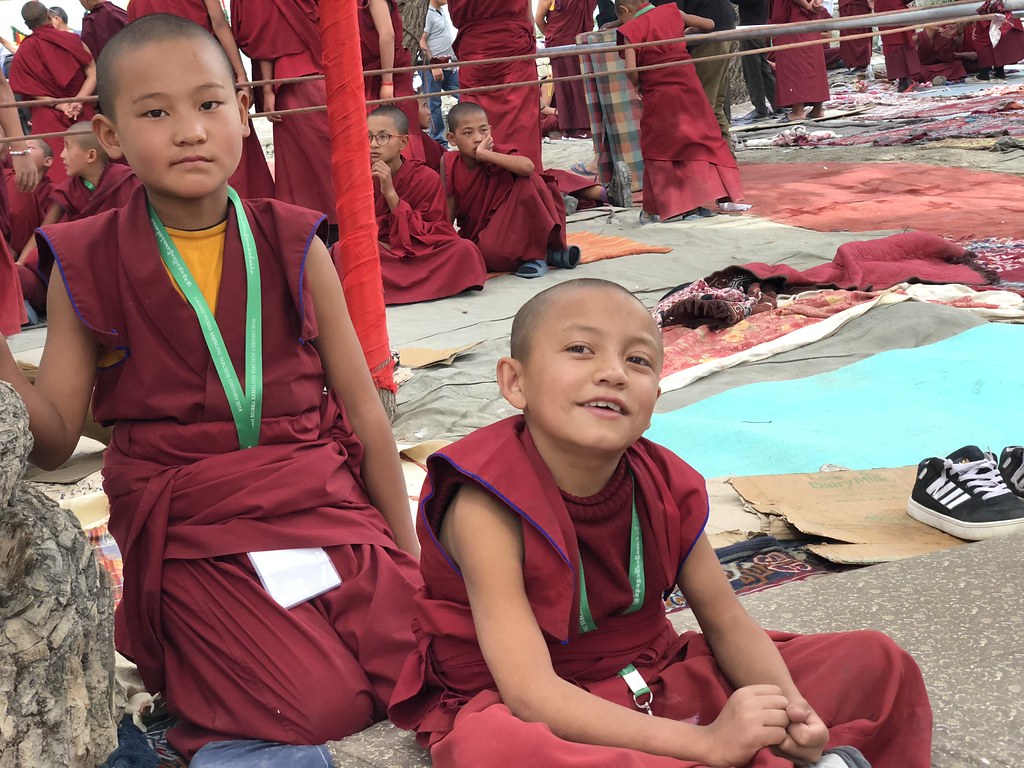

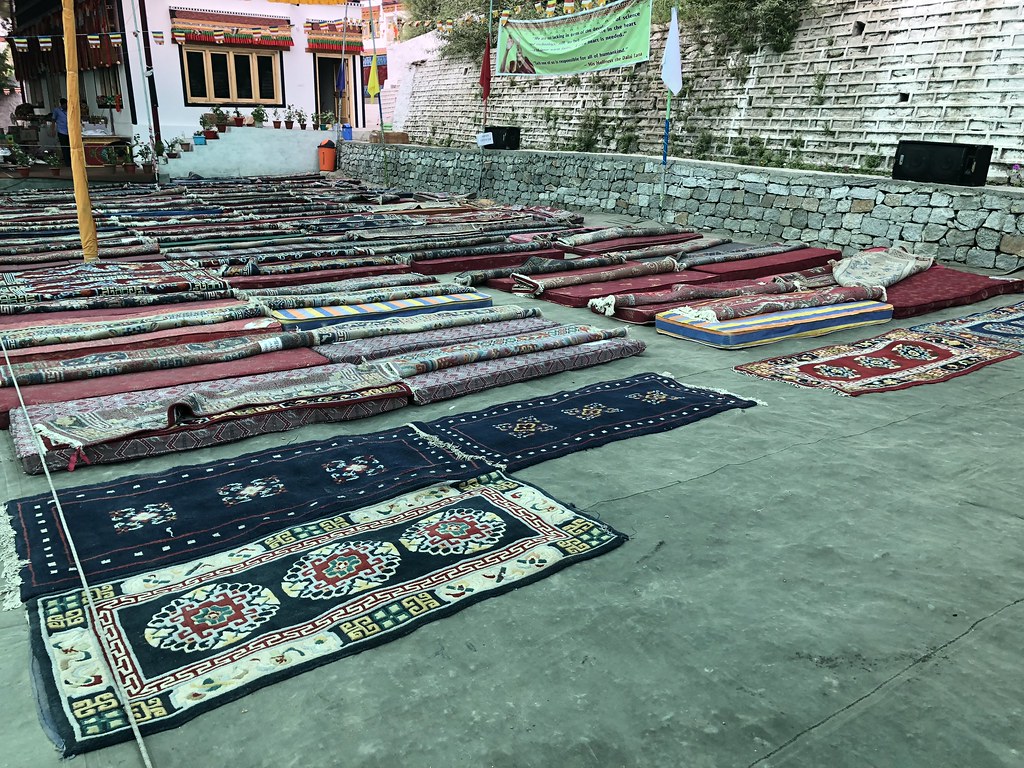
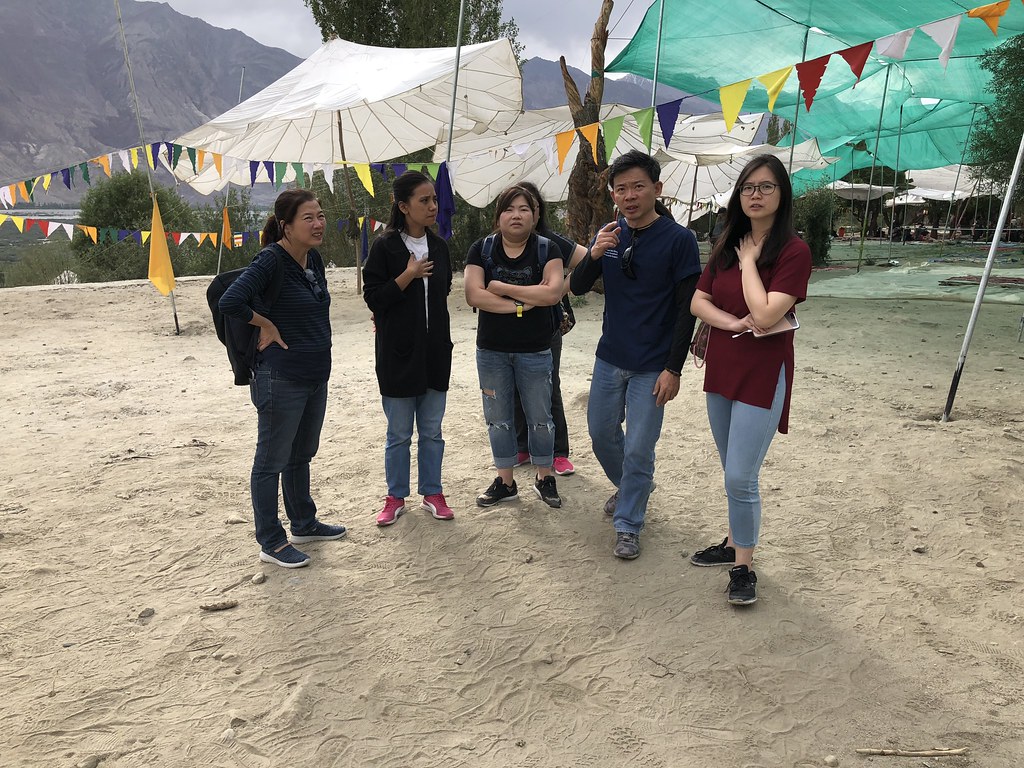
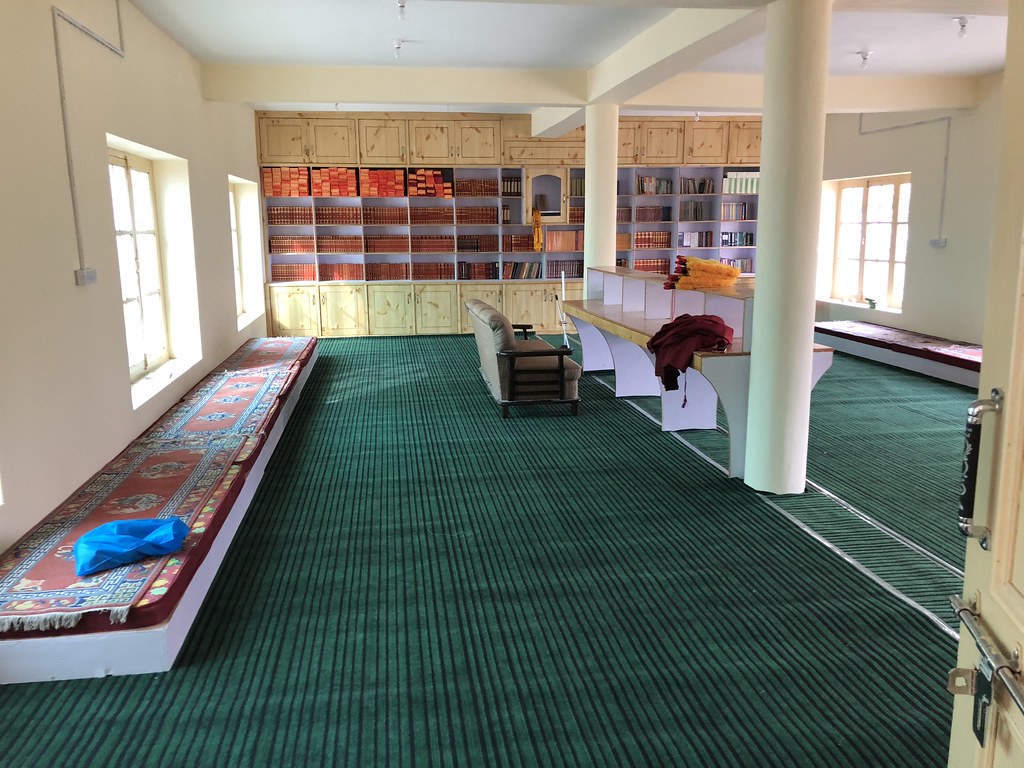
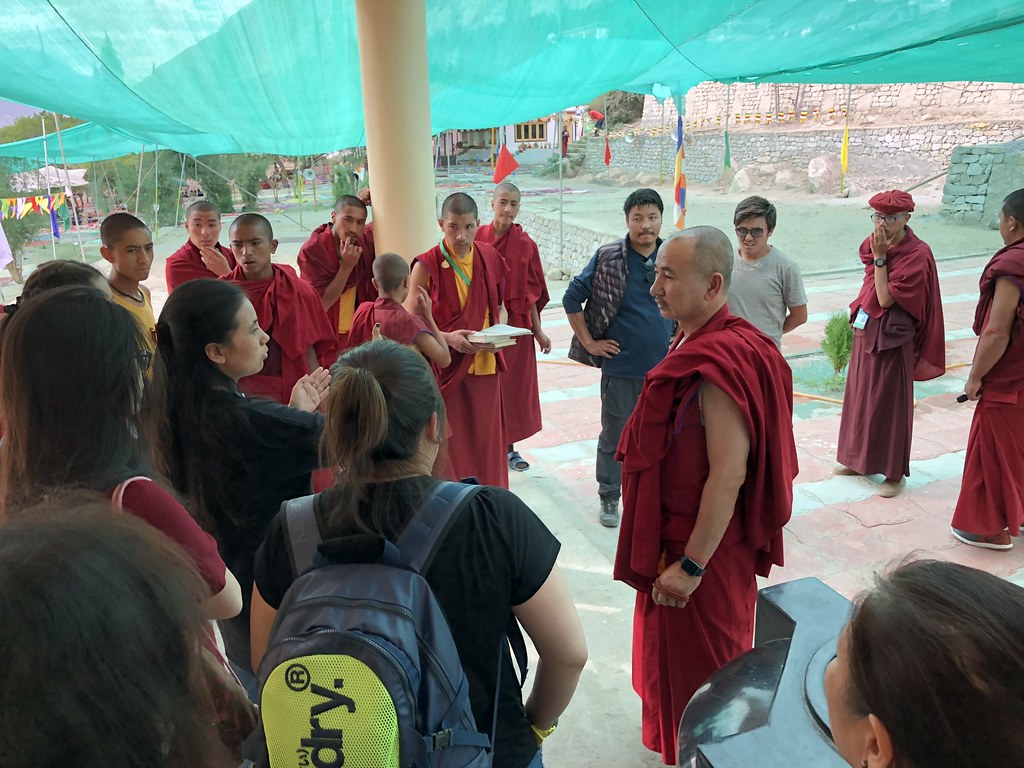

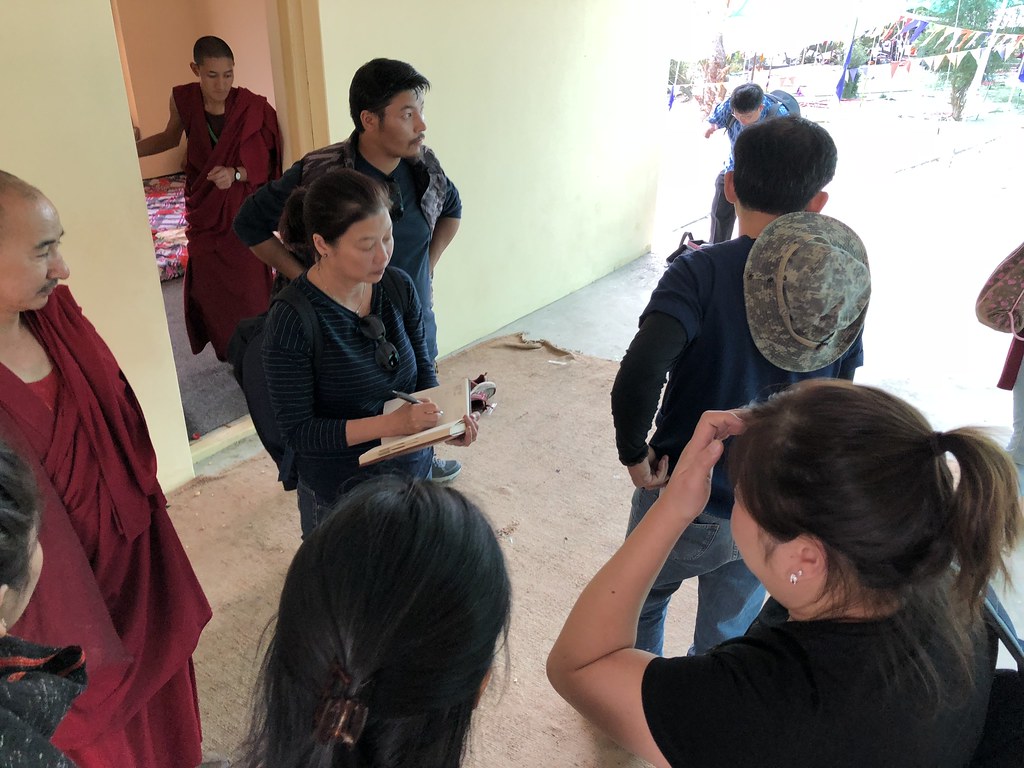

No comments:
Post a Comment